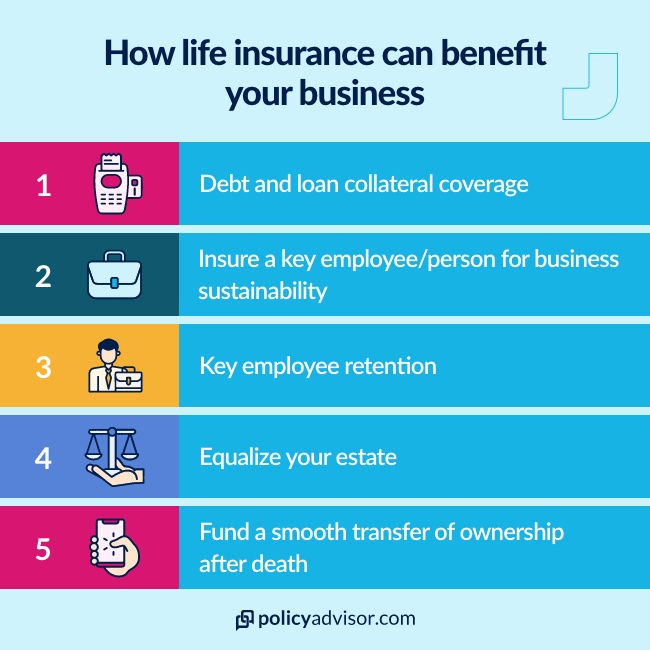Many Canadians are surprised to learn that even though our country doesn’t have an inheritance or estate tax like the United States, the Canada Revenue Agency (CRA) can still take a large portion of what you’ve built through something called the deemed disposition tax.
Without a clear estate plan, this tax can turn a lifetime of savings into a sudden, six-figure bill that’s often due within months. Families often discover that a large part of the inheritance goes to the CRA instead of loved ones.
This is why estate planning is so important, especially for high-net-worth Canadians. A solid plan helps you understand how these taxes work and makes sure your heirs have the funds to pay them without needing to sell family property, investments, or business assets. Understanding how this works, and how whole life insurance can help, is key to protecting your legacy.
Understanding Canada’s Deemed Disposition Tax
Canada’s deemed disposition tax was introduced in 1972 when federal and provincial inheritance taxes were replaced with a capital gains tax system. The tax was designed to tax unrealized gains on property, investments, and business assets upon events like death, gifting, emigration, or change of use – even when no actual sale occurs.
A ‘deemed disposition’ means that the Canada Revenue Agency treats your property as if it were sold at fair market value, instantly triggering capital gains. While exemptions and rollovers exist for spouses and certain family businesses (especially farms), this rule remains the basis for taxing intergenerational wealth transfers in lieu of a formal inheritance tax in Canada.
Under the Income Tax Act, when a Canadian resident passes away, the CRA treats their assets such as investments, real estate, business shares, or art as if they were all sold at once. The gain from these “deemed sales” is added to their final tax return.
Combined with the full taxation of RRSPs or RRIFs unless transferred to a spouse, this can push the deceased’s income into the top marginal tax bracket, resulting in tax bills that can reach hundreds of thousands or even millions depending on the total value of the assets.
A real-world example: The Burlington $670,000 tax bill case
A recent CTV News Toronto story illustrated this perfectly. After both parents in a Burlington family passed away in the same year, their children faced a $670,000 tax bill from the CRA.
The parents had done everything right, from saving in RRSPs, investing in non-registered accounts, and owning a family cottage. But when they died, the CRA treated all those assets as sold at fair market value.
That “sale” triggered:
- Income tax on the couple’s RRSPs, which were taxed in full since they could not be rolled over to a surviving spouse
- Capital gains tax on the cottage and investment accounts, which had grown significantly in value
Because these taxes were all due at once and the estate had no liquid assets or insurance proceeds to cover them, the children were forced to use almost all the RRSP proceeds to pay the $670,000 tax bill to the CRA before receiving their inheritance. This was not a case of poor financial management. It was simply the tax system working as designed.
Which assets are taxed (and not taxed) at death in Canada?
One of the most common estate planning mistakes is misunderstanding which assets trigger taxes upon death. In Canada, only a few are truly tax-free, and most are subject to income or capital gains tax.
Taxed at death:
- RRSPs and RRIFs: Full market value is taxable as income on the deceased’s final return unless transferred to a qualifying beneficiary (such as a spouse, common-law partner, or financially dependent child/grandchild), which allows tax deferral through a direct rollover
- Non-registered investments (ETFs, stocks, GICs): There is a deemed disposition at death, which triggers capital gains tax on all accrued appreciation up to the date of death
- Secondary properties (cottages, vacation homes): Capital gains tax is due on any increase in value since the original purchase, unless the property qualified as the principal residence for some period
- Private company shares or business interests: Taxed on deemed gains at fair market value. Certain rollovers can defer tax if transferred to a spouse or qualifying trust
Not taxed at death:
- Principal residence: Usually exempt from capital gains tax under the principal residence exemption
- Tax-Free Savings Account (TFSA): Upon death, the full fair market value of the TFSA as of the date of death remains non-taxable for beneficiaries. However, any growth or income earned inside the TFSA after the date of death (and before final distribution) may be taxable if paid to a beneficiary, unless the spouse or common-law partner is named as successor holder and assumes the TFSA directly, preserving its tax-free status in their name
- Life insurance proceeds: Typically 100% tax-free to named beneficiaries and usually bypass probate. If the estate is the beneficiary, probate may apply
- Assets transferred to a spouse/common-law partner: Property (including real estate, investments, business assets, etc.) transferred directly to a surviving spouse or to a qualifying spousal trust can be rolled over at the deceased’s adjusted cost base, deferring capital gains tax until the spouse’s death or further disposition
- Qualified farm or fishing property: There are preferential rules for qualified farm or fishing property transferred on death to a child, such as intergenerational rollover provisions, and/or availability of the lifetime capital gains exemption (LCGE).
- Qualified Small Business Corporation Shares (QSBCS): Gains on QSBCS may be sheltered by the LCGE, and certain rollovers may be available if shares are passed to eligible beneficiaries
Here’s a simple overview of the tax-treatment of key Canadian assets when they pass to your beneficiaries upon death.
Assets that are taxed on death
| Asset Type | Tax treatment at death | Exceptions |
| RRSPs & RRIFs | Fully taxable as income | Rollover defers tax to spouse or dependent child (if structured properly with prior planning) |
| Non-Registered Investments (ETFs, stocks, GICs) | Taxed on deemed capital gains | Gains up to date of death taxable |
| Secondary Properties (cottages, rentals, vacation homes) | Capital gains tax applies | Principal residence exemption may reduce gains if used as residence |
| Private Company Shares / Business Interests | Taxed on deemed FMV gains | Some spousal/trust rollovers possible |
Assets that are not taxed on death
| Asset type | Tax treatment at death | Exceptions |
| Principal Residence | Generally exempt from capital gains tax | Covered by principal residence exemption |
| Tax-Free Savings Account (TFSA) | FMV at death is non-taxable | Post-death growth taxable unless spouse is successor holder |
| Life Insurance Proceeds | Tax-free to named beneficiaries | Bypass probate unless estate is beneficiary |
| Assets Transferred to a Spouse/Common-Law Partner | Eligible for tax-deferred rollover at adjusted cost base | Tax deferred until spouse sells or passes |
| Qualified Farm or Fishing Property (QFFP) | May qualify for tax-deferred intergenerational rollover | May also use Lifetime Capital Gains Exemption (LCGE) |
| Qualified Small Business Corporation Shares (QSBCS) | Gains may be sheltered using the LCGE | LCGE and certain rollovers may apply |
For most affluent families, the taxable assets are much larger than the non-taxable ones. That’s why planning for estate liquidity is so important.
Why estate planning for high-net-worth Canadians matters
Families with significant assets often hold real estate, business shares, and investments that are difficult to sell quickly. Without planning, executors may need to liquidate assets or borrow money to pay the CRA.
Estate planning helps you anticipate future liabilities and arrange for liquidity before those taxes come due. It keeps your assets intact and your legacy within your family.
How whole life insurance helps pay estate taxes in Canada
For decades, whole life insurance has been one of the most effective tools for high-net-worth estate planning in Canada. It offers both tax advantages and guaranteed liquidity when it is needed most, ensuring that an estate can cover its final tax liabilities without selling valuable assets.
Whole life insurance provides several key benefits:
- Tax-free death benefit: The payout is generally made directly to named beneficiaries, bypassing income tax and avoiding probate. If the estate itself is the beneficiary, the proceeds may be subject to probate. These funds can be used to pay capital gains and income taxes or to preserve properties and investments.
- Guaranteed cash value: Every whole life policy builds a cash value component that grows steadily over time at a rate guaranteed by the insurer. This creates a stable, tax-advantaged asset within your financial plan that can be accessed through withdrawals or policy loans during your lifetime if needed. The cash value continues to grow regardless of market fluctuations, making it a predictable and reliable source of long-term wealth accumulation.
- Participating policy dividends: Many whole life policies in Canada are participating policies, meaning policyholders share in the insurer’s financial performance through annual dividends. These dividends are not guaranteed, but when declared, they can be used to purchase additional coverage, reduce future premiums, or accumulate as cash within the policy. Over time, dividends can significantly increase both the death benefit and the policy’s cash value, creating a compounding growth effect.
- Estate liquidity: The death benefit is typically paid within weeks after the claim is approved. When a beneficiary is named, the proceeds are paid directly to them, bypassing the estate and avoiding probate. This provides heirs or beneficiaries with liquidity to cover taxes and debts without the need to sell investments or property. This ensures family businesses, cottages, or legacy assets remain intact for the next generation.
For the Burlington family, a properly structured whole life insurance policy in their estate plan could have covered the $670,000 tax bill, enabling their children to retain the wealth and legacy their parents spent decades building.
How PolicyAdvisor helps high-net-worth Canadians protect and transfer their wealth
Effective estate planning in Canada is about creating a tax-efficient strategy that ensures your wealth transfers smoothly to the next generation. For high-net-worth Canadians, permanent whole life insurance is one of the most powerful tools available.
It provides the liquidity, stability, and predictability needed to manage capital gains tax, equalize inheritances, protect corporate assets, and keep your estate intact, without forcing your family to sell farmland, real estate, business shares, or investment assets.
At PolicyAdvisor, our licensed advisors help affluent families, incorporated professionals, and business owners design customized whole life insurance strategies for wealth preservation and estate planning.
With access to 30+ top Canadian life insurers, we compare and tailor coverage that fits your estate plan, corporate structure, and long-term legacy goals. The result is a tax-efficient, optimized insurance solution that maximizes your wealth transfer and protects your family for generations.
Frequently asked questions
How does the deemed disposition tax differ from an estate tax in Canada?
Canada does not levy an estate tax on the value of an estate. Instead, the deemed disposition rule taxes unrealized gains and registered retirement accounts as if all assets were sold at death. This creates an income and capital gains tax liability rather than a direct estate tax. For high-net-worth individuals holding property, investment portfolios, and private company shares, this can result in substantial tax obligations, often due within a few months.
What assets most commonly create tax liability at death for affluent Canadians?
The largest tax burdens typically arise from registered investment accounts (RRSPs and RRIFs), non-registered portfolios with accrued capital gains, secondary real estate such as cottages, and shares of privately held businesses. These assets often lack immediate liquidity, meaning executors may need to sell holdings or secure financing to satisfy CRA obligations if planning has not been completed.
How does whole life insurance provide liquidity for estate tax obligations?
Whole life insurance pays a tax-free death benefit directly to beneficiaries, providing immediate liquidity to settle CRA tax liabilities arising from deemed disposition. This prevents the forced sale of real estate, corporate shares, or investment assets, allowing wealth to transfer intact and on the family’s timeline. The guaranteed cash value and potential dividends also support long-term estate strategy and tax efficiency.
Can permanent life insurance reduce taxes, or does it only provide liquidity?
Permanent life insurance primarily funds tax obligations, but it can also enhance tax efficiency. Growth inside a whole life policy accumulates on a tax-advantaged basis, and policy loans or withdrawals can create access to capital without triggering capital gains. For business owners, corporate owned life insurance may enable tax-efficient wealth transfer via the Capital Dividend Account (CDA), further reducing the tax burden.
Is deemed disposition delayed if assets pass to a spouse?
Yes. When assets transfer to a surviving spouse or a qualified spousal trust, the deemed disposition is deferred until the spouse’s death. However, this is a deferral, not an elimination. Without planning, the surviving spouse’s estate may face even larger taxes when assets eventually dispose simultaneously.
Is a trust enough to avoid taxes at death, or is insurance still required?
Trusts can provide control, creditor protection, and probate efficiencies but do not eliminate deemed disposition tax on capital gains. For families with illiquid assets or significant unrealized gains, trusts and whole life insurance often work together: the trust governs distribution, while insurance supplies the liquidity to fund taxes.
When should families start estate planning to manage deemed disposition tax?
Estate planning is most effective when begun well before retirement age, particularly for individuals with appreciating assets, business ownership, or family cottages. Establishing permanent insurance, corporate structures, or trusts early allows time for cash value growth, tax deferral, and gradual wealth transfer while minimizing liquidity strain later.





